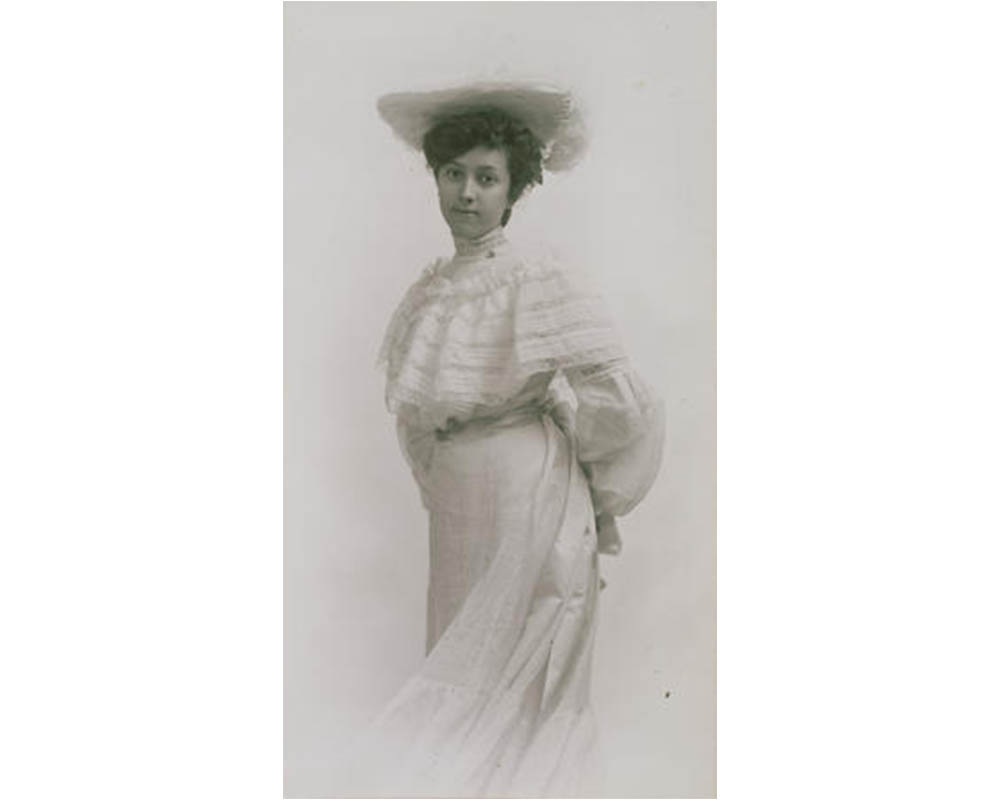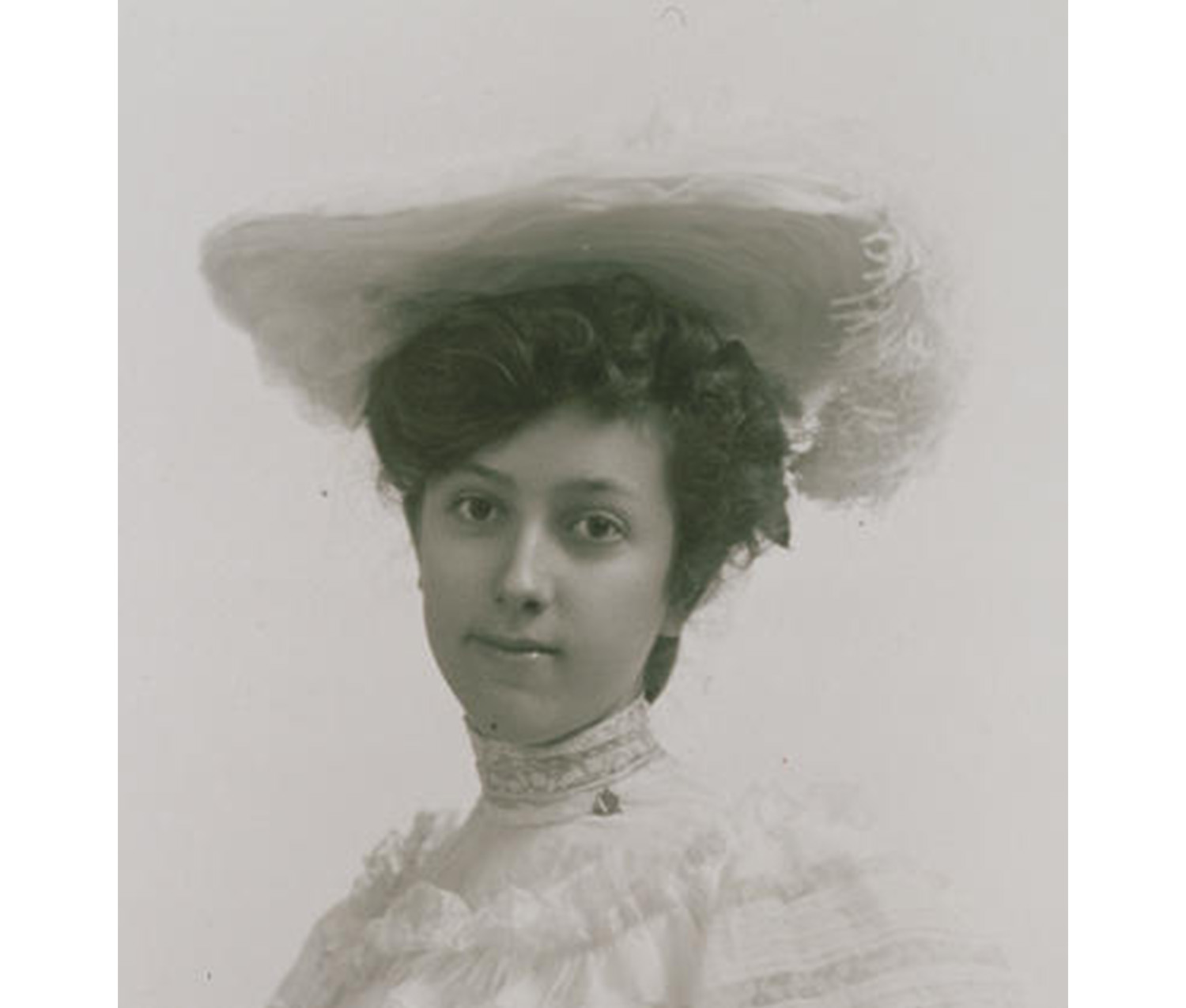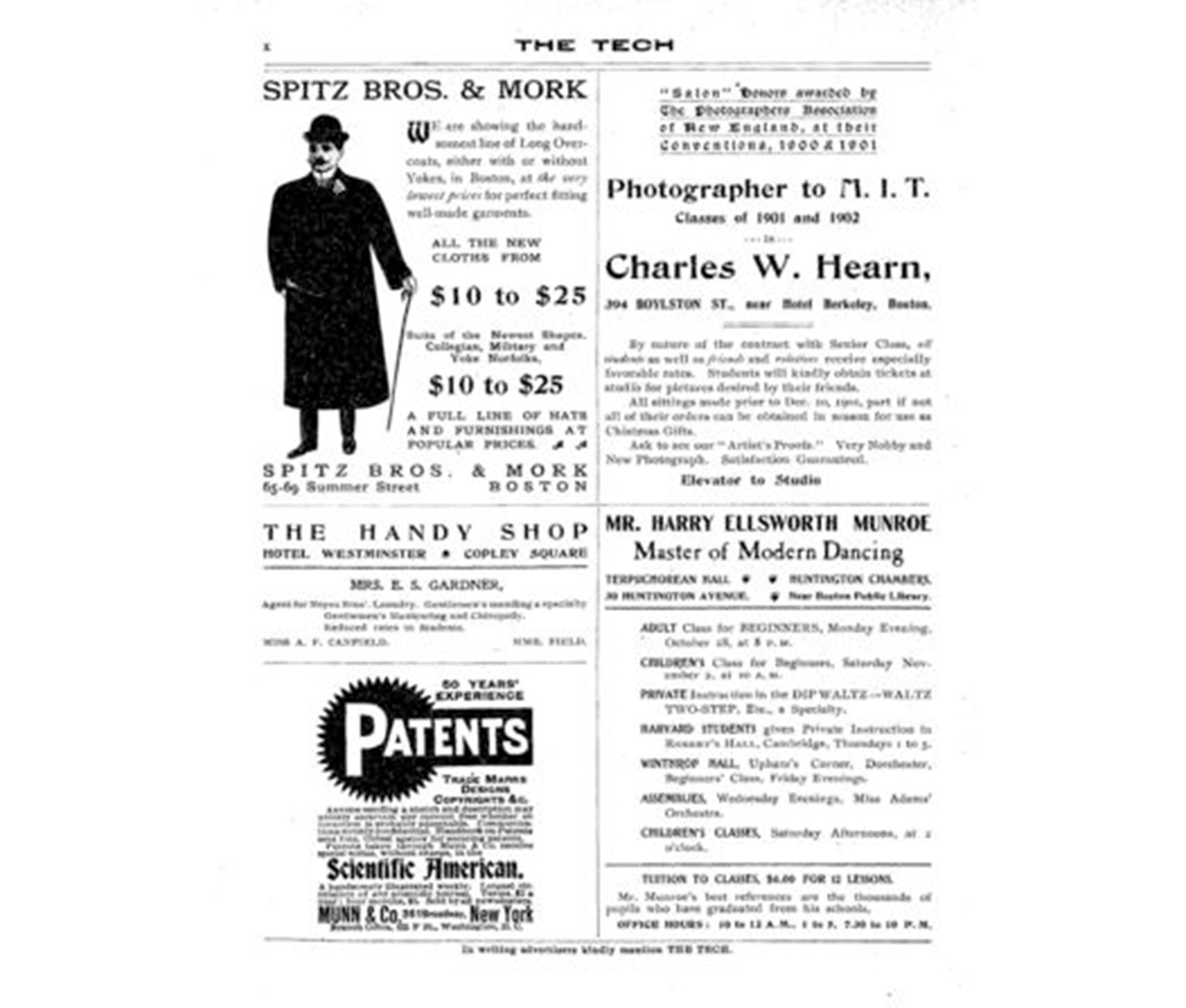
Lady in White
Guest blogger Petru Bester is a Smith College student, class of 2015, with a major in Art History. She is a Student Assistant in the Cunningham Center for the Study of Prints, Drawings, and Photographs.
While browsing the Cunningham Center’s collection, I happened upon a beautiful portrait of a woman in all white. Out of curiosity I glanced over the catalogue information and found little satisfaction in the information provided. I, of course, immediately turned to a preliminary Google- the bearer of all knowledge- search of the artist's name, Charles H. Hearn, but again found little information of use. Shifting to a more refined and academic source I invested some time into prodding the 5 College library database...still nothing! How could this be? Completely enamored with mystery and intrigue, I became obsessed with the woman in white and was determined to unveil her secrets.
The portrait, hidden amongst the 18,000 works on paper housed by the Cunningham center, had not yet been fully processed. When it first entered the museum, an influx of accessioned works made it almost impossible to fully research each work to the fullest extent. Many, like my lady in white, lay in waiting. Excited by the blank slate I surrendered myself to the web and its vast chasm of endless unfettered information.

Detail of Studio Portrait of a Young Woman
Up until this point I had only seen my lady in white, who is actually simply entitled Studio Portrait of a Young Woman within the museum database. Needing to see the photograph in person, I brought it out of storage, and with bated breath lifted the matt and removed the protective tissue paper. Aside from her imposing presence and beauty, my eye was instinctively drawn to the matt information: the handwritten description read “Charles W. Hearn” --The clue and confirmation I needed. With renewed sense of hope I fervently returned to the seemingly less daunting web chasm to explore the discrepant middle initial. Turning up more favorable results, I finally began seeing remnants of the illusive artist.
An hour or two later I had uncovered that Charles W. Hearn was in fact an affluent portraitist and author who owned his own studio. I was, unfortunately, not able to get a hold of a copy of any of his books but found several art journals and magazines in which he was featured or contributed. More interestingly I found a few fun archival pieces that illuminated the career and success enjoyed by Hearn. Below a page from a 1902 edition ofThe Tech, the school newsletter for MIT, illustrates an advertisement of Hearn’s for senior portraits. I was also able to find a listing for Hearn’s studio in a 1922 edition of The New England Business Directory and Gazetteerfor the area of Boston. Additionally I discovered an account of the meeting minutes recounted in,The professional and Amatuer Photographer, Volume 8, in which Hearn was elected First Vice-President-elect of the P.A. of A (one of various state associations of Photographers).

Now satisfied with the biographical information obtained about the artist I was still left yearning to know more about the woman that found herself the object of this print and my affection. As would be expected with Hearn’s expertise, the portrait is executed to technical perfection. The sitter’s lower body turns away from the camera as her torso turns back toward it. Her face is in full frontal profile while her hands clasp behind her back. A sense of elegance and effortlessness are evident both in her posture and through her flowing white gown. Her direct gaze meets the viewer directly but remains soft and inviting.
The aesthetics and visual analysis of the portrait only serve to embellish my adoration of the lady in white. All I can do is reciprocate her gaze woefully. I do not know who she is. I do not know for what purpose her portrait was taken. I do not know if she ever saw her portrait or received a copy of it (or even perhaps once owned this copy). She remains elusive to me and will forever haunt me.